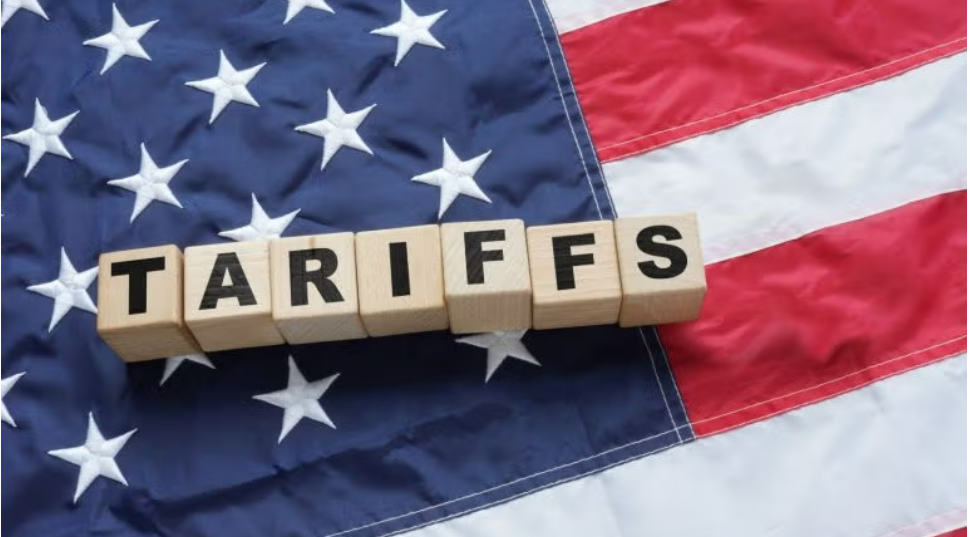Four ways business execs predict tariffs will impact their firms

FOUR WAYS BUSINESS EXECS PREDICT TARIFFS WILL IMPACT THEIR FIRMS
Business planning uncertainty is one of the concerns linked to rising tariffs with many execs saying they either plan to raise prices, cut costs and/or revisit their sourcing portfolio.
GlobalData has released the results of a sentiment poll of the business environment in response to tariffs imposed by US President Donald Trump.
6,399 business executives were polled between April and May. GlobalData has identified four themes regarding how business leaders expect their firms to be affected as the impact of tariffs comes to bear.
Tariff anxiety is rife
65% of respondents said they are either very concerned or slightly concerned about the impact of tariffs on their business. Nearly two-thirds of respondents reported their company’s sentiment towards proposed high tariffs was either very negative or somewhat negative.
That said, a “sizeable minority expressed no concern about the impact of tariffs.
“This could be down to the nature of their business (i.e., services are not subject to tariffs), the goods they sell, and the potential to benefit from spillover effects.”
Earlier, new data from GlobalData suggested that when it comes to the global fashion sector, volume growth will remain soft as tariffs lead to higher prices, especially in the US, which will influence trends in the apparel sector.
And consumers are also continuing to reduce apparel spend by shopping secondhand, trading down to cheaper brands, and focusing on capsule wardrobes.
Growth should, however, improve slightly in 2026 as the world adjusts to the new tariffs and economies recover. Out to 2029, the market is expected to grow at a CAGR of 3.0%, to reach $2,427.1bn.
Uncertainty in long-term planning
A clear majority of respondents said their company’s attitude toward proposed higher tariffs was negative. Many companies face challenges if these tariffs come into force, including uncertainty in long-term planning, rising costs, compliance complexity, and reduced demand from international markets 57% of respondents said tariffs were impacting long-term planning.
Higher input costs were also a concern for 50% of respondents.
64% of respondents said tariffs would negatively affect their business outlook over the next 12 months, up from 61% in the previous poll.
And four in 10 believe tariffs will continue to rise over the next 12 months. Despite the 90-day pause on most reciprocal tariffs, the near and long-term outlook is dogged by uncertainty, complicating investment and management decisions. Three in 10 say they are unsure how long high tariffs will impact their business operation, hindering long-term planning and strategic decision making as businesses await clarity on the status of US reciprocal tariffs.
But 31% believe high tariffs would impact their business operations for less than a year.
One in five respondents believed the tariffs’ impact would be medium to long-term, with 19% expecting the effects to last between one and three years, and 23% anticipating the impact would extend beyond three years.
A number of US apparel brands and retailers have sounded warnings over the anticipated impact of tariffs, adjusting their profit outlooks accordingly, including Guess? Which has envisaged a $10m hit, and Abercrombie & Fitch, which said its full year outlook assumes around $50m in tariff impacts or about 100 basis points as a percentage of net sales.
While, Gap Inc suggests that if tariff levels persist, it could lead to additional gross costs in the range of approximately $250m to $300m over FY25.
Price increases loom
Half of the respondents said they had increased prices or planned to do so due to high tariffs. Only one in 10 companies had no plans to increase prices. For companies not increasing prices in 2025, reducing operational or production costs is the main strategy being used to manage rising expenses.
Shein & Temu, both impacted by the tariff hike on China and the withdrawal of the De Minimis benefit, both earlier warned of price hikes.
But 37% of respondents expressed uncertainty about their company’s pricing strategies due to high tariffs. Many companies may be delaying pricing decisions as they seek clarity, with premature pricing increases risking strategic missteps in highly competitive markets.
Those that are not looking at price rises are looking at cutting costs or negotiating new terms with suppliers. This equates to around 50% of the respondents.
24% of respondents said they would specifically be looking at negotiating new terms with suppliers.
While 48% said they were considering reducing operational or production costs.
Europe stands to benefit the most from tariff spillover effects on global procurement
Nearly 25% of companies are shifting overseas investments to the US and Europe due to high tariffs.
Those moving to the US may seek to avoid high reciprocal tariffs, while Europe presents an opportunity for strategic diversification, offering a more stable and reliable trading environment among major economies amid uncertainty surrounding the US and potential further US-China trade tensions.
34% of respondents indicated they were now more likely to source from this region. This was followed by the US at 24% and China at 22%.
According to the latest data from the US Office of Textiles and Apparel (OTEXA), apparel shipments from wider Asia (without China) surged in April, with Bangladesh seeing the biggest increase at 38.2% year on year, followed by Cambodia and Pakistan whose shipment volumes increased by 36.4%.
US imports of apparel from China fell by 0.2% during April to 480m SME. Its market share fell from 27.3% to 24.5% year over year.
Future US trade agreements will likely boost US procurement as US export barriers are relaxed in exchange for tariff relief.
The US-UK trade deal announced on 8 May 2025, marked the first trade agreement by the US since ‘tariff liberation day’ and included relaxed export controls on US beef and ethanol, among other measures.
Nearly six in 10 respondents said tariffs were influencing their company’s long-term investment or expansion decisions, underscoring the current relevance of trade policies in strategic decision-making.
By Just Style
